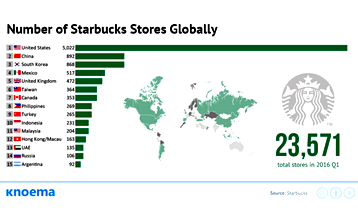
four years after opening its first café in China – in 1999 – Starbucks had registered its major trademarks in China. Numerous Chinese companies have overstepped legal bounds inside their efforts to mimic the effective Starbucks model.
The company and structure of Starbucks’ global operations was informed by general market trends. The company strategies employed by Starbucks were created from Starbucks’ encounters in other emerging markets supported an early on recognition that China is not one homogeneous market. The company strategies employed by Starbucks addressed the various Chinese markets. The culture dominant in northern China differs considerably within the culture inside the eastern regions of China, as reflected inside the variations in consumer spending power inland that’s considerably under the spending power in seaside urban centers. The complexness in the Chinese markets introduced to regional partnerships to assistance with Starbucks’ plans for expansion in China the partnerships provided consumer knowledge of Chinese preferences and tastes that helped Starbucks localize for the diverse markets.
- Northern China – partnership with Beijing Mei Da coffee company
- Eastern China – partnered with Taiwan-based Uni-President
- Southern China – labored with Maxim’s Caterers in Hong Kong
Starbucks’ competitive advantage is created on product, service, and brand attributes, a couple of which are actually proven through general market trends to get crucial that you Starbucks’ customers. Western brands provide an advantage on local Chinese brands as a result of generally recognized status for consistently greater quality products and services, an element that establishes the Western brands as premium brands inside the minds of customers. When Western brands try and increase business by cutting prices, they erode the competitive strategy that gives them a benefit in consumer perceptions. In addition, Western brands cannot effectively keep a affordable prices strategy than local Chinese brands. Maintain brand integrity in untouched markets. Starbucks’ global brand is effective and searching after brand integrity can be a fundamental concentrate Starbucks’ internationalization efforts. The baristas in China acted as brand ambassadors to help embed the Starbucks culture inside the new market and make certain topping standards for customer service and product quality are maintained every single new and established local store.
Starbucks’ capacity to deal with altering markets is honed by effective and ongoing general market trends. Creating and searching following a global Starbucks brand doesn’t always mean obtaining a worldwide platform or uniform global products. Starbucks web marketing strategy in China required it’s origin from personalization because of diverse Chinese consumer target segmentation. Starbucks created extensive consumer taste profile analyses that are sufficiently agile to be able to change while using market also to produce a beautiful East meets West product mix. In addition, the localization attempts are sufficiently flexible allowing each store to offer the versatility to pick from a sizable beverage portfolio.
Resourse: https://thebalance.com/
